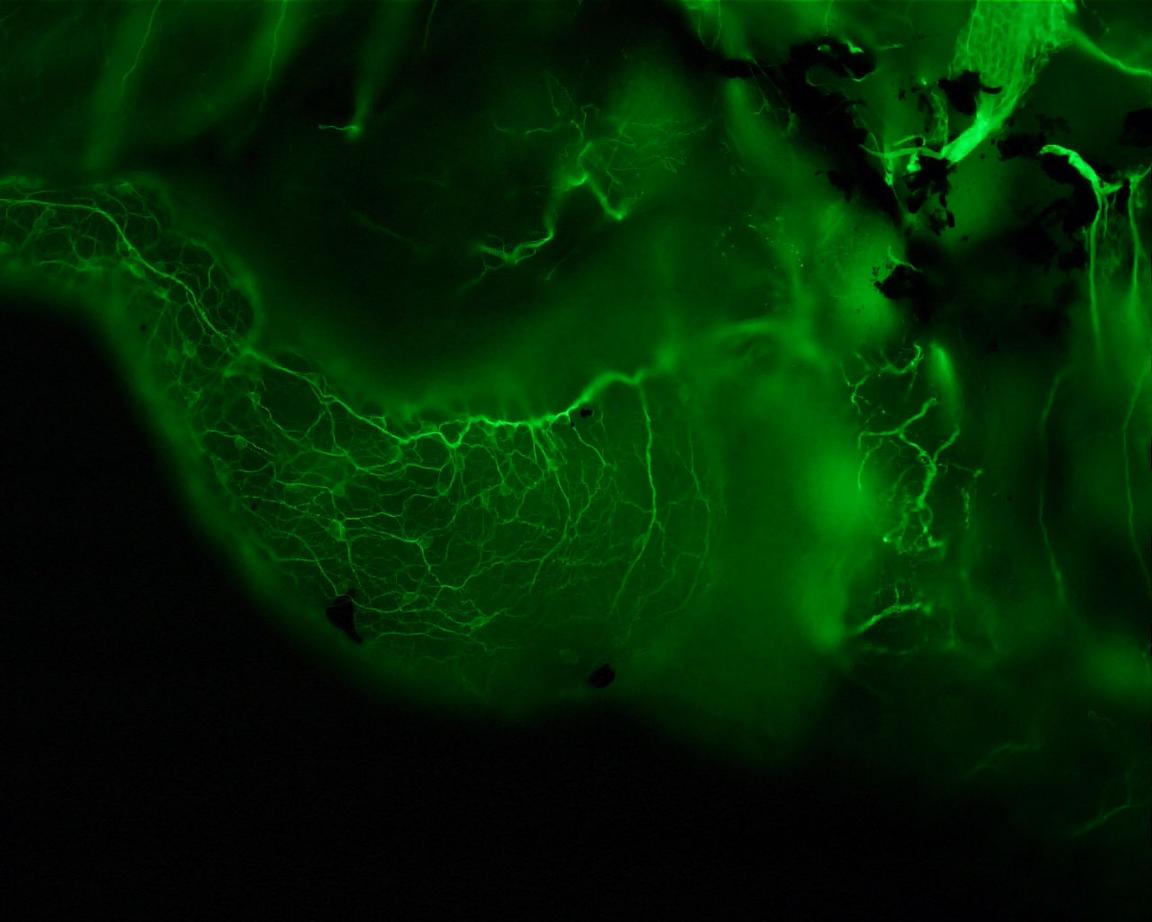Closer look: The fish with no stomach
This time we have a fish under the microscope – more precisely, a nine-day old zebrafish fry. What you can see in the picture is its enteric nervous system, the stomach’s ‘brain’, which controls functions in the gastrointestinal tract. The entire image is 0.670 millimetres in size.

The Department of Biological and Environmental Sciences is studying the physiology of fish, including how their autonomous nervous systems work. One of the reasons for using zebrafish as a model is that their fry are transparent, which makes it possible to follow peristalsis under a microscope on live (but anaesthetised) fry.
“In the picture you can see all the nerves, both sensory and motor. But we have also used staining where we only wanted to look at a certain type of nerve, mainly based on the neurotransmitters they contain,” says senior lecturer Catharina Olsson.
The zebrafish is a species of carp, which actually has no stomach.
“We don’t know why they lost their stomach during the course of evolution, but the most likely explanation lies in the type of food they eat and that having no stomach is more ‘economical’.